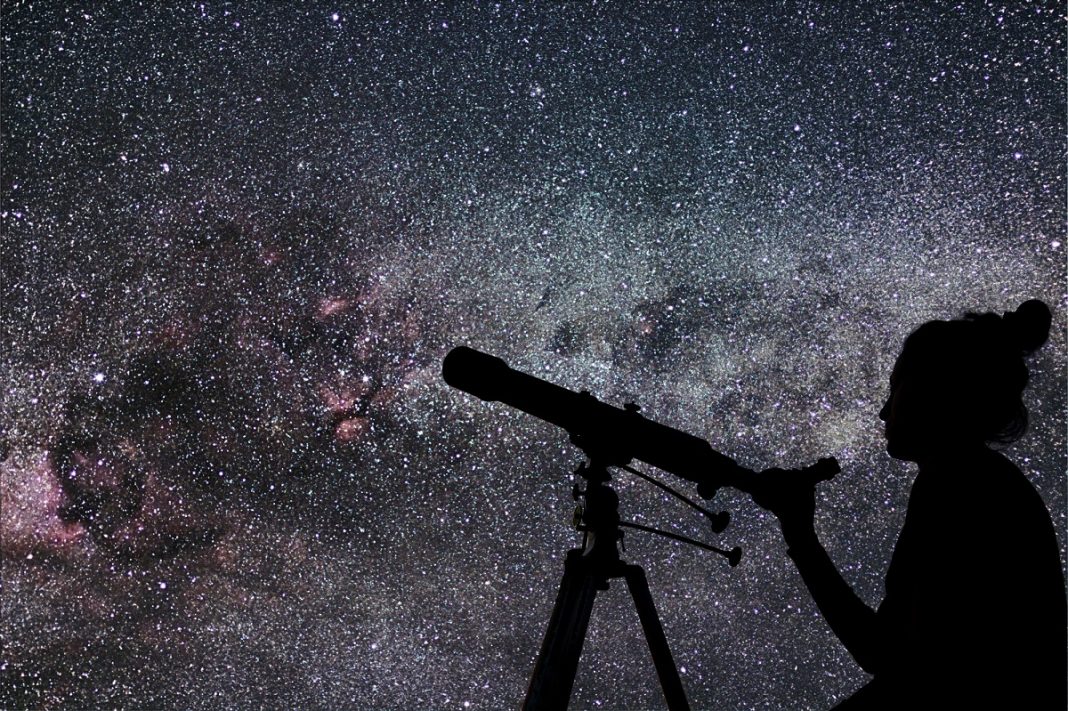UNITED STATES—The blackness of night is engorged with radiant yet mysterious celestial objects that strike wonder into the viewer. The Ancients looked at the sky as the boundary into the heavens and without modern equipment to aid them they noticed many wondrous things.
Telescopes are used by NASA to discover many things going on in our atmosphere and beyond. Telescopes are nice to own, but they aren’t needed if you want to identify objects in the sky. Find a location where the light pollution is low and look up at the night sky. If you would like to use equipment through an expensive telescope it is not necessarily something you’ll need to invest in. A simple pair of binoculars with a magnification of 7, 10 or 15 will do just fine.
One of the easiest astronomical bodies to observe is the moon. It’s not a constellation that comes around once a year like Scorpius or Lyra, it’s around all the time just in different phases. With a pair of binoculars, you can identify the moon’s highlands and Maria. The best time to observe the moon is when it is nearly new. Ironically, the worst time to view it is when it is full because the angle of the sun.
Although the moon is lovely to look at it can be your worst enemy when viewing deep sky objects. The moon can be an interference because when it’s in its full phase it lights up the night sky diminishing your field of view. To appreciate deep-sky objects look up when the moon is new. The darker the sky the better.
Assuming you’re in the northern hemisphere deep-sky objects you’ll be able to see are: The Seven Sisters aka the Pleiades, the Milky Way Galaxy, Andromeda Galaxy and the Orion Nebula just to name a few. Orion’s Nebula is only 1,300 light years away which makes it the closet stellar nursery to Earth.
If you want to keep away from deep-sky objects try finding Jupiter which can be observed on most nights of the year. Jupiter has been known as one of the brightest objects in the sky since antiquity and can be viewed with the naked eye.
Unlike what some assume Galileo was not the first astronomer to discover Jupiter. He was the first to record a detailed account of the planet using a primitive telescope. It is still unknown when the gas giant was first discovered and by whom. However, Galileo’s findings were revolutionary because it demonstrated that the Earth was not the center of the Universe.
Jupiter’s largest moons like Europa and Callisto can be seen alongside the gas giant. If you’re viewing with binoculars Jupiter’s moons appear as four points around the planet.
When Galileo began to observe the planet seriously in the early 1600s, he wrote that there were “three fixed stars, totally invisible by their smallness.” When he observed the same objects on a different night, he noticed these objects shifted in position. This observation was the discovery of multiple moons orbiting Jupiter.
Much has been discovered since Galileo’s time and many mysterious aspects of space are still being explored. While most of us will not be part of these great discoveries that change the world, we can to some degree still enjoy the journey of discovery by observing what is up in the sky.






